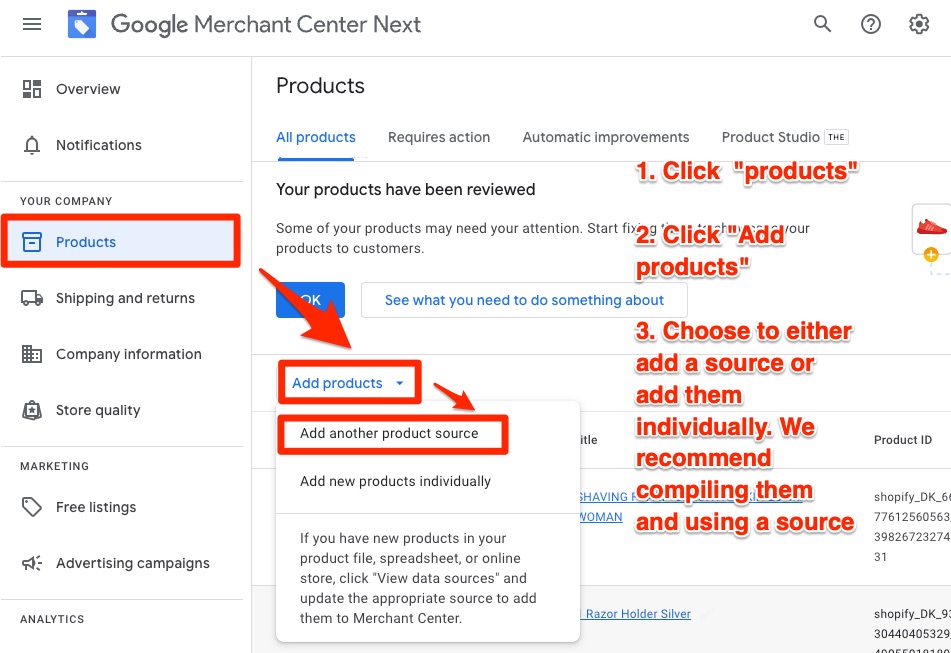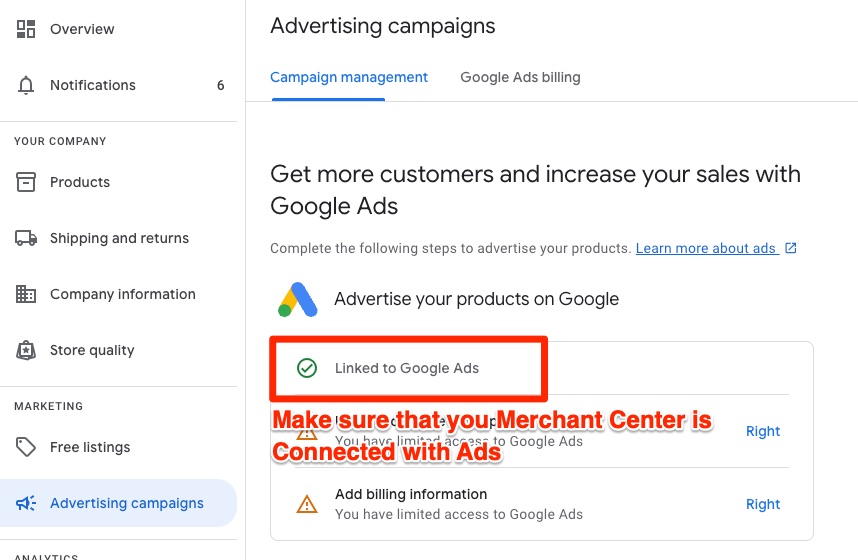Connecting an online store to Google Shopping can make a world of difference for anyone looking for more visibility. Since Google Shopping displays your products right at the top of relevant search results, it can help your store reach the right people fast. This guide explains the basic steps for linking a WooCommerce store to Google Shopping so your products can be listed and used in ads to attract potential customers.
Going through the process might feel overwhelming at first, as there is new terminology, settings, and feeds to manage. The basic idea is simple: you create a structured list of your products, called a “product feed,” and send it to Google Merchant Center. From that point, Google can show your products in its Shopping tab and search results. Below, you'll find details on how to set everything up, why it matters, and how to adjust your feed for better outcomes.
Why Google Shopping Matters
Google Shopping is a powerful channel for eCommerce. It allows people to see product images, prices, and descriptions right in Google results, which brings in visitors who are already looking for what you sell. Having your products displayed in these search results can lead to visits with more purchase intent.
Three main benefits of using Google Shopping:
- Visual Appeal: Shoppers see images before they click, so they know what to expect.
- Streamlined Experience: It’s easy for potential customers to compare items, reducing the time between discovery and purchase.
- Better Qualified Leads: If people click on your listing, they are likely interested in the product, increasing your chance of a sale.
Sometimes, shoppers bypass full websites and rely on Google for research. If your listing is prominent in Google Shopping, it’s easier to attract them to your store.
Preparing Your WooCommerce Store
Before linking your store to Google Shopping, be certain that your WooCommerce setup is operating correctly. This step helps prevent issues when you create or sync your data feed. Make sure that:
- Your WordPress and WooCommerce installations are current.
- All product details—titles, descriptions, images, and prices—are correct.
- Your store follows Google’s policies on privacy, shipping, and returns.
Keep in mind that Google enforces strict product listing policies. Ensure your product pages comply with any guidelines regarding restricted, adult, or regulated items. A quick review of Google’s current policies can help you avoid feed disapprovals later.
Check for Basic Store Details
Review your store settings in WooCommerce to confirm:
- The currency is set correctly.
- Your physical address and contact details are complete.
- Payment and shipping tools are properly configured.
If store information is missing or inaccurate, Google might not accept your feed or could lower your listings' visibility.
Setting Up Google Merchant Center
Google Merchant Center is where you manage your product listings. It keeps your data feed, monitors item statuses, and connects to Google Ads for running campaigns.
To set up a Merchant Center account:
- Visit the Google Merchant Center webpage and sign in with a Google Account.
- Provide your business name, website, and basic details.
- Verify and claim your website by placing a meta tag on your site’s head section or using an alternative verification method.
After verification, the Merchant Center dashboard is available for uploading feeds, checking product approvals, and looking into potential problems.
Primary vs. Supplemental Feeds
Within Merchant Center, you can create both a Primary feed and one or more Supplemental feeds. A Primary feed is your main data source that includes all required product fields. A Supplemental feed can offer extra details such as alternate images or custom labels.

Creating the Product Feed
A feed is a file with rows representing products and columns containing data fields like product ID, title, price, image link, and others. Google requires certain fields, so include them for your listings to be accepted. While the process can be technical, common methods include:
- Manual Spreadsheet
- Automatic Plugin Export
Manual Spreadsheet Method
If you choose the manual spreadsheet route:
- Create a Google Sheet with columns for each required attribute.
- Include the product title, link, image link, price, availability, brand (if needed), and a unique product ID.
- Authenticate your sheet within Merchant Center and schedule regular fetches to keep data updated.
One benefit of this method is the control you have over each attribute. However, it can be tiring if you have many products because you must update everything by hand.
Automatic Method With a Plugin
Another option is to use a dedicated WooCommerce plugin that automatically creates your store’s product feed. Typically, such a plugin:
- Lets you map WooCommerce product fields to Google feed attributes.
- Provides a feed URL that updates periodically.
- Manages complexities like variations, sale prices, and stock counts.
Once you set the options and decide how often to update, the feed will sync with Google Merchant Center automatically. This method is helpful if your catalog is large or if prices change frequently.
Important Google Product Fields
Below is a small table that summarizes commonly required and optional fields for Google Shopping:
Adding as many applicable fields as possible tends to match searches better.
Uploading Your Feed to Merchant Center
After creating your feed (whether manually or with a plugin), upload it to Merchant Center. Do this by going to “Products” → “Feeds” and selecting “Primary Feed.”
Depending on how you built your feed, choose one of these options to import it:
- Scheduled Fetch: Let Google fetch your feed URL daily or more often.
- Upload: Manually upload the file from your computer if it is a spreadsheet or XML file.
- Content API: Plugins may connect directly to Google’s API.

Once uploaded, Google processes the feed, reviews the products, and flags any items with errors or warnings. Processing can take several hours or longer, depending on your store size.
Common Errors During Feed Upload
- Missing or incomplete descriptions
- Price inconsistencies between feed and live site
- Invalid image links
- Overlapping or duplicated product IDs
- Incompatible file formats (for example, missing columns)
Address any warnings or errors in Merchant Center quickly. Items with critical issues may be rejected until the error is fixed.
Linking Merchant Center to Google Ads
After your products appear in Merchant Center, you can run paid Shopping campaigns by linking your Merchant Center account to a Google Ads account. Once linked, your approved products can appear as Shopping Ads in search results.

Link your account by going to Merchant Center and clicking on "Advertising campaigns", you will be able to log in from there.
Once done, you can create a new Shopping campaign in Google Ads. You choose the products to promote, set a budget, and bid for clicks. The campaign uses details from your Merchant Center feed to generate ads.
Basic Campaign Settings
Within Google Ads, provide:
- Daily Budget: The maximum spend per day on Shopping ads.
- Bidding Strategy: How to pay for clicks (for example, manual CPC or automated strategies).
- Targeting: Specify locations and languages for your audience.
Shopping ads show details like images, prices, and your store name. Though you cannot control the ad text as much as with search ads, optimizing product titles and descriptions can improve results.
Optimizing Product Titles and Descriptions
A key part of using Google Shopping is writing product titles and descriptions that match common search queries. Simple language is usually enough, but clarity and relevant terms help.
- Keep Titles Descriptive: Ensure the name reflects main features such as brand, color, size, or material without extra words.
- Follow Character Limits: Titles can be up to 150 characters but avoid filling them unnecessarily.
- Use Plain Language: Short, clear sentences help Google understand what you sell.
- Include Key Words: If many search for “waterproof hiking backpack,” include that phrase in the product listing.
Verifying Stock and Price Accuracy
A common reason for product rejections is a mismatch between the feed data and the live product page. Whenever you run a sale or update your store, check that the WooCommerce product details match your feed. If you use a plugin for automation, schedule frequent refreshes.
Some quick steps include:
- Running test purchases or adding products to the cart to ensure prices match.
- Confirming that any coupons or special offers appear in the feed.
- Verifying that shipping charges match what is shown on your site.
Keeping your feed and site in step prevents issues for shoppers and stops Google from suspending or rejecting your listings.
Using Additional Labels and Custom Tags
Once you have the basic fields set up, think about adding custom labels or tags to organize your campaigns. For example, you can assign labels for items like “Best Sellers,” “Seasonal Items,” or “Clearance.” Then, implement custom bidding strategies for each group in Google Ads.
Some store owners use labels to indicate margin ranges, allowing them to bid higher on products with better margins and lower on items with smaller profits. Others use labels to separate seasonal goods or new releases that need extra promotion.
Keeping Your Feed Healthy
Merchant Center provides a dashboard to check the status of each product. Items might be approved, rejected, or pending. It also shows feed-level issues and suggestions for improvement.
Tips for feed upkeep:
- Check your feed status at least once a week.
- Address any new errors or warnings quickly.
- Verify that newly added products include all necessary data.
Even with many products, occasional feed errors can occur. Prompt fixes help keep your products visible.
Brief Overview: Manually vs. Automatically Managing Feeds
The choice between manual and automatic methods depends on the size of your store, your comfort with data entry, and how often product details change.
Avoiding Policy Violations
Google enforces strict rules against listings that promote harmful or illegal items, adult content, or unapproved pharmaceuticals. Accurate shipping and tax details are also required.
To reduce the risk of violations:
- Read Google’s merchant guidelines carefully.
- Use correct product categories for items that could be misclassified.
- Include necessary disclaimers if you sell regulated products like supplements.
Even if you believe you are compliant, Google might still reject a product listing. Read messages in Merchant Center to understand what triggered an error and make the needed adjustments.
Testing Your Google Shopping Listings
After setting everything up, test your listings by searching for your product name on Google. If your item is specific enough, you might see your Shopping listing.
Merchant Center’s “Diagnostics” section shows:
- The number of approved products
- Which items are rejected
- Impressions and clicks if your Google Ads account is linked
If impressions remain low after a while, check your bidding strategy, product data, and targeting settings.
Additional Tips for Ongoing Success
- Monitor competitors’ pricing. If your prices are much higher, the click rate might suffer.
- Update product images to keep them clear and appealing.
- Use custom labels to manage promotions or new product lines.
- Track conversion rates in Google Ads and adjust bids if necessary.
Some store owners overlook how products appear in the feed over time, so performing regular spot-checks can help.
Budget Management and Bidding
Set realistic daily budgets and test different bidding strategies. Shopping campaigns can be more cost-effective than regular search campaigns, though success depends on proper management. Start small, review performance, and then decide if you want to increase your spend.
Segmenting Shopping Campaigns
A useful tactic is splitting your products into different campaigns or ad groups. You might want to bid higher on top-selling items or products with better margins. By creating separate campaigns, each can have its own budget, schedule, and geo-targeting.
You can also split campaigns by product type, brand, or custom label. This makes it easier to see which products perform best and to allocate funds more accurately.
FAQ: Connecting WooCommerce to Google Shopping
Getting your WooCommerce store listed on Google Shopping can help drive more visibility and sales. Below are answers to common questions about the setup process and best practices.
What is Google Shopping, and why should I use it?
Google Shopping displays product images, descriptions, and prices directly in search results, making it easier for shoppers to discover and compare your items. It attracts highly targeted visitors who are already interested in your products, improving the chances of conversion.
How do I connect my WooCommerce store to Google Shopping?
You’ll need to create a Google Merchant Center account, generate a product feed, and submit it to Google. You can do this manually with a spreadsheet or automate the process using a WooCommerce plugin to sync your product data.
What is a product feed, and why is it necessary?
A product feed is a structured file that contains important details about your products, such as titles, images, prices, and availability. Google uses this feed to populate Shopping listings and ensure accurate information is displayed to potential buyers.
Can I update my product feed automatically?
Yes, automation is possible with WooCommerce plugins that generate and sync feeds with Google Merchant Center on a schedule. This ensures your listings stay up to date with stock levels, price changes, and new product additions.
How do I prevent Google from disapproving my listings?
Make sure your product data is accurate, follows Google’s policies, and includes required attributes like product titles, descriptions, prices, and valid images. Any mismatch between your feed and live store data may lead to disapprovals.
What should I do if my products are rejected?
Check Google Merchant Center for error messages, verify that your information meets Google’s requirements, and correct any issues with missing or incorrect details. If necessary, update your feed and resubmit it for review.
Do I need Google Ads to appear in Google Shopping?
While free Shopping listings are available in some regions, using Google Ads allows you to run paid Shopping campaigns, placing your products more prominently in search results and increasing visibility.
How do I improve my Google Shopping performance?
Optimize your product titles, descriptions, and images to match common search queries, set competitive prices, and monitor performance in Merchant Center and Google Ads. Regularly updating your feed and fixing errors can also improve results.
Is it better to manage my product feed manually or with a plugin?
Manual spreadsheet management gives full control over data but can be time-consuming, especially for larger catalogs. Plugins automate updates and reduce errors, making them a more scalable solution for most online stores.
How often should I check my feed status?
Regularly review your Merchant Center dashboard—at least once a week—to catch any feed issues, disapprovals, or missing product details. Frequent monitoring helps prevent problems from impacting your Shopping listings.
Want to try the #1 AI Toolkit for SEO teams?
Our AI SEO assistants helps write and optimize everything - from descriptions and articles to product feeds - so they appeal to both customers and search engine algorithms. Try it now with a free trial→












